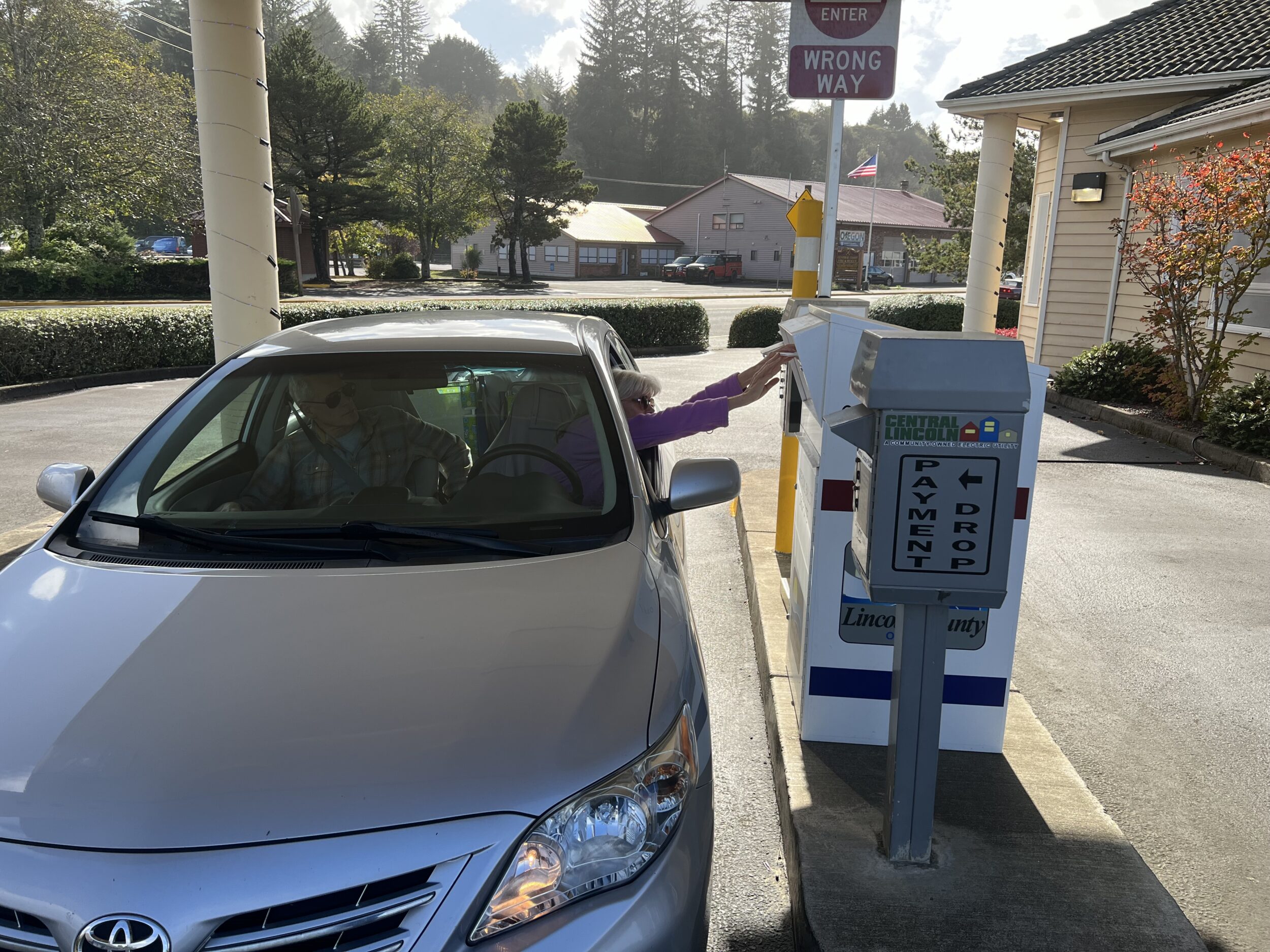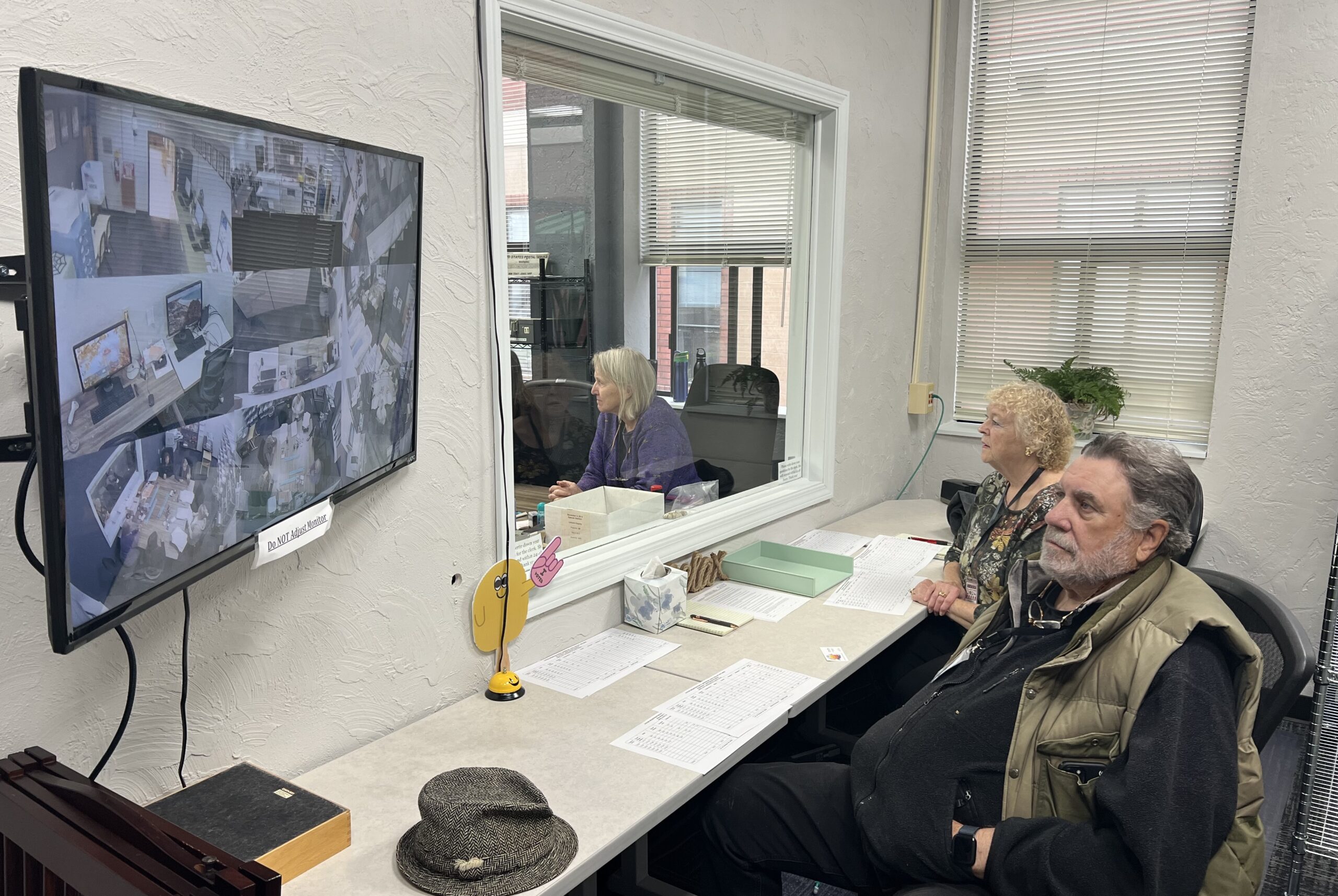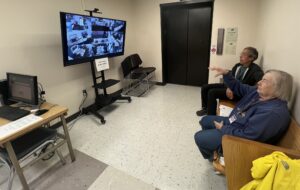
By QUINTON SMITH/YachatsNews
Lincoln County is expecting a flood of ballots over the next four days as the voting deadline approaches in Tuesday’s general election.
As of Friday, the county clerk’s office had processed 19,690 of the record number of 41,178 ballots sent to Lincoln County voters, a return rate so far of nearly 48 percent compared to a statewide rate of 38 percent. County clerk Amy Southwell expects a total of 33,000 to be returned by Tuesday’s 8 p.m. deadline for a turnout of 80 percent, typical of a presidential general election.
 Voters can either mail their ballot – postage is pre-paid – or put them in special ballot collection boxes at all seven city halls and the county courthouse in Newport by 8 p.m. Tuesday.
Voters can either mail their ballot – postage is pre-paid – or put them in special ballot collection boxes at all seven city halls and the county courthouse in Newport by 8 p.m. Tuesday.
Under a 2-year-old change in Oregon law, if a ballot is postmarked by 5 p.m. Tuesday it will still count even if it reaches the clerk’s office after that Nov. 5 date. Lincoln County ballots dropped off in other counties are still sent to the clerk’s office in Newport.
You can track your ballot via the Oregon Secretary of State’s website here.
Tuesday night, two election workers — and for the first time a sheriff’s deputy — will be posted at each of the eight collection boxes to enforce the 8 p.m. cutoff and then take the last of the ballots to the courthouse. Ballots will not be counted if they are handed in after 8 p.m. Tuesday.
The clerk’s office has been counting ballots since Oct. 23 and will release the first results shortly after 8 p.m. Tuesday, and update results at 5 p.m. Wednesday and again at 5 p.m. Friday, Nov. 8. The fourth and final but unofficial results will come at 5 p.m. Nov. 12.
The big draw, of course, is the presidential matchup between vice president Kamala Harris and former president Donald Trump. In Lincoln County, two presidential election years – 2020 and 2016 – saw a turnout of 80-81 percent. For the non-presidential general election in 2018 the county’s turnout was near 70 percent.
While registered Democrats hold a lead over Republicans – 13,700 to 8,856 – in Lincoln County, it is people registered with no party – officially called unaffiliated voters – who have the most registrations at 15,469.
But that hasn’t meant much when it comes to voting for president. Lincoln County is the rare rural coastal county where voters have favored Democrats running for president for the last six general elections dating back to the Al Gore versus George W. Bush contest in 2000.
Lots of decisions
This election, voters are also deciding:
- New people for three new statewide offices – attorney general, secretary of state and treasurer. Oregon voters are also deciding five ballot measures.
- The 4th Congressional District covers all of Lincoln County and Rep. Val Hoyle is being challenged by Monique DeSpain of Eugene.
- One contested local legislative race – Sen. Dick Anderson, R-Lincoln City, is being challenged by Florence city councilor Jo Beaudreau for the Oregon Senate District 5 seat that runs from Lincoln County south to Coos Bay, and now includes slices of Benton and Lane counties. In the Oregon House, Rep. David Gomberg, D-Otis, is running unopposed for his seventh two-year term.
- Races for one seat on the county’s board of commissioners to mayoral and council positions in every city – Yachats, Waldport, Newport, Toledo, Siletz, Depoe Bay and Lincoln City
- Increased or new operating levies for the Central Oregon Coast Fire & Rescue District and for the Seal Rock Fire District.

How mail ballots are counted
By the time votes are announced, Lincoln County election workers will have handled ballots seven times and be “observed” at least twice by volunteers from the local Republican and Democrat parties.
Here’s how ballot are handled:
- Each evening, two county clerk employees collect the ballots from the eight drop-off sites in padlocked boxes;
- Once envelopes reach the clerk’s office, employees spread them on a table, sort them into piles of 20, record the total and put them in containers;
- The ballot envelope contains a unique bar code that identifies each voter. Two employees use a special wand to read the barcode, which loads the voter’s information into a secure, county computer. An employee – under a camera’s eye – then calls up each computer file to check the signature on the ballot with the voter’s registration card;
- If there are issues with a signature, the employee puts the ballot aside to be double-checked – and decided – by Southwell. If Southwell decides the signature does not match, the clerk’s office tries to contact the voter and get a new, signed registration card.
- The approved envelopes – with the ballot still inside – are then taken to a separate room where four election workers of different parties sort them by precincts. Then they are run through a machine that opens the envelope and put on a table where the workers take out the additional “secrecy” envelope inside and remove the ballot. This year two observers, after locking up their personal items and cell phones, will sit on the other side of a large window to watch the counting process.
- The workers check each ballot for issues such as misplaced marks and then double-check any issues with a second worker. Once they agree, the ballots are put in another locked box.
- The actual ballots – which have no identifying codes or marks connecting them to an individual voter – are then run through a scanner by Southwell (and no one else) to record each vote. The tabulations are kept in the computer’s hard drive – which is not connected to the internet – and not released until after 8 p.m. Nov. 5.

The observers – volunteers from the two parties working in two-hour shifts — have been sitting in the clerk’s office and in a second-floor hallway of the county courthouse for the past seven days.
On Wednesday, Lincoln County Republican Central Committee chair Joan Crall of Waldport and Mike Broili of South Beach were watching ballots being counted through a large, plate glass window in the clerk’s office. Down the hall, Judy Stefl and Wayne Sitkei, both of Lincoln City, sat in chairs near the elevator watching the whole process on a large TV monitor fed by nine cameras in the clerk’s office.
Crall, who had been critical of the county’s ballot-counting procedures four years ago, said Wednesday she’s now satisfied with the process.
“There are a lot better processes in place now,” she said. “We feel good about how ballots are handled.”



Thank you for the detailed information about how ballots are processed. Having been an observer myself in the past, I would highly recommend it as an example of seeing how our democracy works, especially under pressure. I am very proud of how our state and county offices handle this important job!